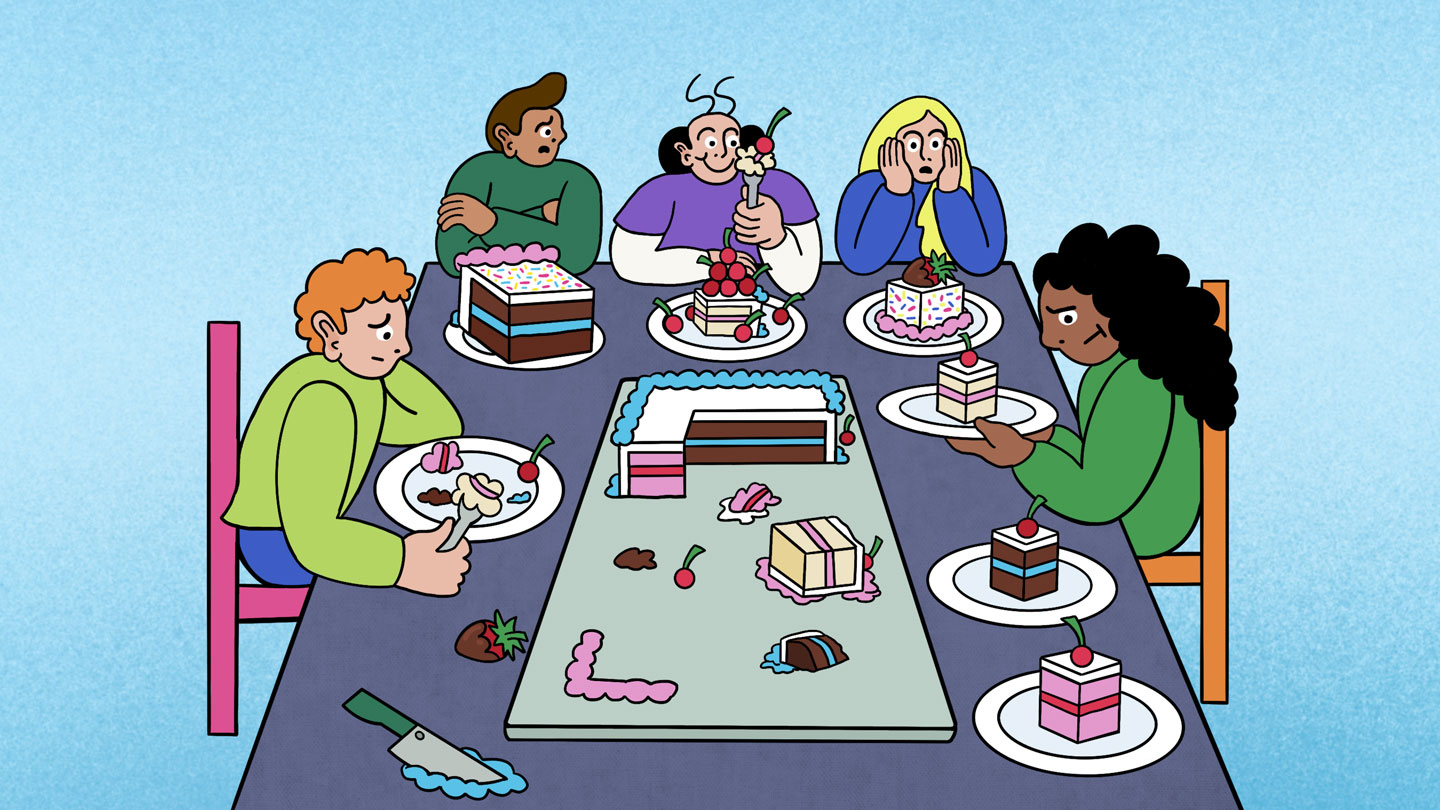Here’s why mathematicians are so interested in cake cutting
Ariel Procaccia has thought a lot about how to cut cake over the last 15 years. That’s partly because the Harvard computer scientist has three children who among them have celebrated more than two dozen birthdays. He knows what it’s like to stand with a knife before a layered masterpiece, frosted with buttercream and chocolate curls, while pressed on all sides by small partygoers who instinctively recognize when someone else gets a better slice.
But it’s also because much of Procaccia’s work focuses on exploring the mathematical rules for dividing stuff up. One way to do that is to think abstractly about dessert. For more than 75 years, he and other researchers trying to formalize fairness have been asking the deceptively simple question: What methods for cutting a cake guarantee that everyone who shows up to the party is happy with what they get?
The answers reach far beyond birthday parties. Cake-cutting contemplation is part of a sprawling mathematical subfield focused on the fair division of resources. It has spurred a raft of algorithms informing how to allocate food among hungry communities, how to split rent or chores among roommates, how to draw boundaries for fair voting districts and more. A mathematical problem at its heart, cake cutting connects rigorous reasoning to questions of human preferences and real-world issues, and so attracts not only mathematicians, but also computer scientists, economists, social scientists and legal experts. Questions of fairness (and unfairness) are decidedly universal. Of course, so is dessert. “It’s this very elegant model in which you can really distill what fairness is, and reason about it,” Procaccia says.
